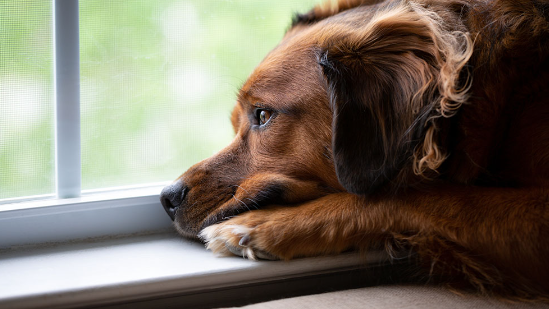When raising a dog, there are a bunch of behavioral issues he may exhibit throughout his life. Separation anxiety could be one of them, and it may cause pet parents an incredible amount of frustration.
You come home from a long day at work to a dog that’s wet from drool, trembling, and wide-eyed with fear. Jumping and spinning whirlwind energy upon seeing you, your dog follows you into your living room, where you find the remote and couch cushions chewed into bits. As if not enough, your neighbor comes by to tell you that your furry friend, once again, has been driving the neighborhood crazy by barking and howling while you were away.
It is evident you’re dealing with more than just canine mischief. It is a case of a pup with separation anxiety and can cause stress for your pet and you if ignored.
So, it would be best if you didn’t dismiss this as something to worry about later; you can prevent dog separation anxiety before it starts. This article outlines ways to ease a dog’s separation anxiety.
What is Separation Anxiety?
Separation anxiety (SA) is a behavioral condition that describes dogs that are hyper-attached to their owners. When such dogs are left alone in the house, they become too anxious and start displaying distress behaviors. While separation anxiety is more common in puppies, older dogs may get super-stressed when left alone, so all pet owners must be aware of this condition.
What are The Symptoms of Separation Anxiety?
There is no defining sign of separation anxiety since dogs can display stress in many ways. One or two of them may not signify separation anxiety, especially if they only happen occasionally.
Here are some of the signs of separation anxiety in dogs:
- Excessive drooling and panting.
- Destructive behaviors like chewing.
- Excessive whining, howling or barking.
- Anxious behaviors like trembling.
- Prolonged attempts to escape confinement.
Why Does Your Dog Have Separation Anxiety?
Several potential situations can ignite separation anxiety in dogs. Some dogs are more prone to SA than others for several reasons, including traumatic separation, often seen in most abandoned shelter dogs. Most pets usually get this behavioral condition when they cannot comfort themselves. Below is a list of situations associated with separation anxiety in dogs.
- Change of ownership.
- Loss of a family member.
- Change in schedule or family routine.
- Being left alone for the first time.
How to Ease Separation Anxiety
When treating separation anxiety in dogs, your goal should be twofold: to encourage your dog’s ability to relax when you are away and to help him feel less reliant on you. Unfortunately, it takes time and patience to help a dog get past separation anxiety since there is no quick remedy for stress-based behaviors.
Here are five ways to help ease separation anxiety in dogs:
- Always take your dog for a walk before you leave the house. The idea is to leave your dog in quiet, resting mode while you are away from home.
- Don’t touch or make eye contact with your dog when you leave for the day and when you return. By doing this, you are trying to communicate with your dog that the time apart is just business and not a big deal.
- Crate train your pet because it gives it a quiet and safe place to relax when you are not around. You can stuff the crate with chew toys and food-releasing puzzle toys that would entice your dog for the time you will be away.
- Practice counter-conditioning. It involves teaching your pet that separation has some rewards. Give your dog a high-value treat before you leave the house. He might even start looking forward to your departure.
- Never encourage overly clingy behavior. Teaching your dog to be independent is one of the perfect ways to battle excessive attachments. Always ignore your dog until it’s relaxed every time you come home. Provide your dog with private areas such as dog beds. You may greet your dog with love depending on the level of clinginess, but don’t get too emotionally attached.


